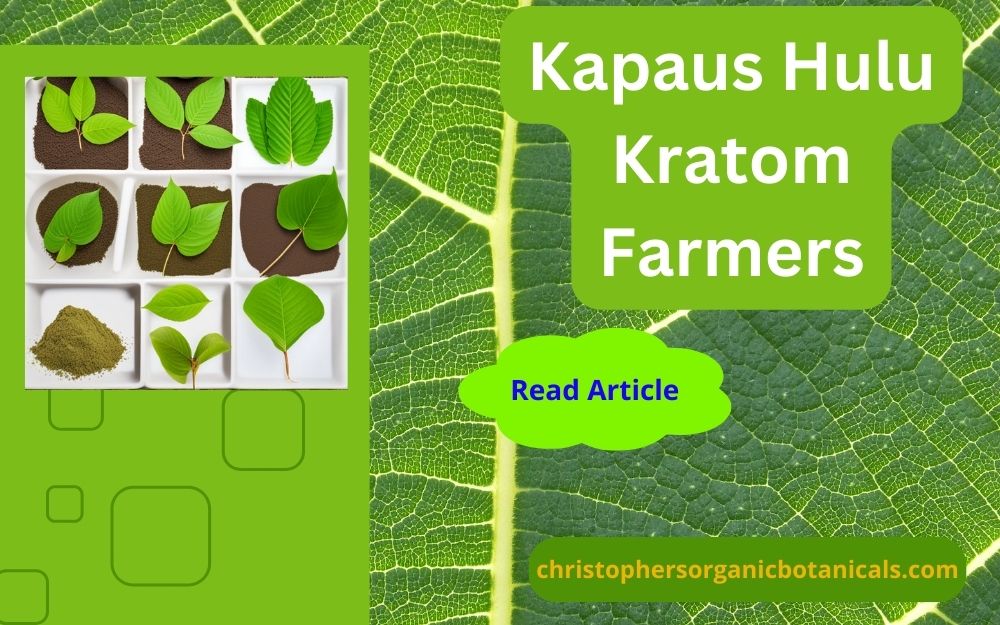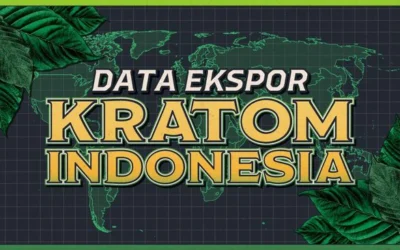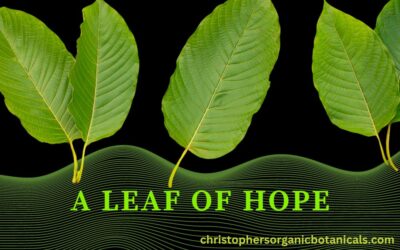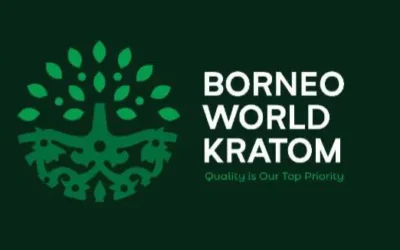Who are the Kapaus Hulu Kratom Farmers?
Kapuas Hulu refers to the upstream region of the Kapuas River in West Kalimantan, Indonesia, on the island of Borneo. Kratom is a tree that grows in Southeast Asia, mainly in Indonesia, Thailand, and Malaysia. People in these regions have traditionally used the leaves of the kratom tree for centuries for medicinal, therapeutic, and recreational purposes.
The Appuri Kratom Farmers group is who we have used for years and we are 100% confident hat this is the best group of kratom farmers in Indonesia.
For Kapuas Hulu kratom farmers, the plant represents:
Economic Livelihood: Kratom farming and selling is a big source of income for local farmers because of high global demand.
Traditional Significance: The local communities have a history of using kratom for various cultural and therapeutic practices.
Challenges and Regulation: The global controversy surrounding the potential for abuse and dependency on kratom, and the resulting varied legal status in many countries, can impact these farmers significantly.
Fair Trade and Sustainable Farming: The push for fair trade kratom ensures that the farmers receive a fair price for their crop, encouraging sustainable and ethical farming practices. This can lead to better environmental and social outcomes in the region.
Protection against Exploitation: Fair trade principles aim to prevent the exploitation of local farmers. They do this by ensuring that farmers receive a fair share of the profits. This is instead of middlemen or larger corporations taking most of the profits.
Overall, the cultivation of kratom in Kapuas Hulu is more than just an economic activity. It’s connected to culture, global markets, and ongoing debates about the safety and benefits of the plant.
Why is Fair Trade Kratom Important to the Kapaus Hulu Kratom Farmers?
Here are some key reasons why fair trade kratom matters to the Kapaus Hulu Kratom Farmers:
- Ethical Treatment of Farmers:Fair trade ensures fair pay and ethical treatment for kratom farmers and workers.This helps improve their living conditions and empowers them to have a more dignified and sustainable livelihood.
- Community Development: Fair trade helps local communities by investing in projects like education, healthcare, and infrastructure for their development.
- Environmental Sustainability:Fair trade is eco-friendly and sustainable, using responsible farming practices to protect the environment. This can include responsible land use, avoiding the use of harmful chemicals, and promoting biodiversity.
- Quality Control: Fair trade certification often comes with stringent quality control measures, ensuring that the kratom meets certain standards of purity and potency.
- Transparency and Accountability: Fair trade means being open about where kratom comes from, so buyers know and producers are responsible.
- Social Responsibility: By choosing fair trade, consumers can support companies and producers that prioritize social responsibility and sustainable business practices.
- Long-Term Viability: Fair trade helps industry thrive by responsibly managing resources, protecting the environment, and supporting communities involved in cultivation.
- Consumer Confidence: Fair trade certification assures consumers that the speciosa they buy is made ethically and sustainably.
By supporting fair trade kratom, consumers can contribute to a more equitable and sustainable global trade system. Growing kratom makes this important in certain areas. It helps build good relationships between producers, exporters, and consumers. It also encourages responsible and ethical business practices in the kratom industry.
The Kratom Tree
We focus on fair trade products and think that all products manufactured should be fair trade products. We need our world to be sustainable and make sure that we have resources for our future generations. Kratom trees hold immense significance in the lives of Kapaus Hulu kratom farmers, playing a vital role in their daily existence. These trees are not mere commodities that can be haphazardly cut down and destroyed; they are deeply valued and respected by the farmers.
The cultivation and preservation of Mitragyna Speciosa trees are of utmost importance to the Kapaus Hulu kratom farmers. These trees provide them with a sustainable source of income and livelihood. The leaves of the kratom tree are harvested and processed to create various Mitragyna Speciosa products, which are then sold in local and international markets. This economic activity not only supports the farmers and their families but also contributes to the overall economic development of the region.
The farmers also actively participate in reforestation efforts to replenish and expand the kratom tree population. They know it’s important to keep the ecosystem and biodiversity healthy because it affects how the trees grow and survive. By planting and protecting kratom trees, they help preserve the natural habitat and ensure future availability of Mitragyna Speciosa.
In conclusion, kratom trees hold immense significance in the lives of Kapaus Hulu kratom farmers. They are not merely seen as a means of income but are deeply valued for their cultural, economic, and environmental importance. Farmers are dedicated to sustainable agriculture and their community’s well-being. They preserve and expand the kratom tree population, using responsible farming practices.
Where is Kapaus Hulu?
Kapuas Hulu is a regency (kabupaten) located in the province of West Kalimantan on the island of Borneo in Indonesia.
Here are some details about the region and why we should support Hulu Kapaus:
1. Geography: Kapuas Hulu is located in the northern part of West Kalimantan. It shares borders with Malaysia to the north. The region encompasses a vast area of forest, including parts of the Heart of Borneo, one of the world’s most biodiverse regions.
2. Rivers: As the name suggests, Kapuas Hulu is at the upstream or headwaters of the Kapuas River, which is Indonesia’s longest river.
3. Biodiversity: The region is rich in biodiversity and home to many unique species, both flora and fauna. It’s part of a larger conservation area known as the “Heart of Borneo.”
4. Culture: Kapuas Hulu is home to the indigenous Dayak people, known for their unique culture, traditions, and longhouses.
5. Local Economy: The local economy includes traditional agriculture, fishing, and some localized mining and logging. However, conservation efforts aim to promote sustainable practices in the area due to its environmental significance.
6. Conservation: Given its rich biodiversity and vast tracts of rainforest, there are significant conservation efforts in place in Kapuas Hulu, including collaborations between the Indonesian government, NGOs, and local communities.
Should you require further details or have particular inquiries about Kapuas Hulu, do not hesitate to inform me! We collaborate with the top team in Indonesia!
Rivers in Indonesia
Indonesia, an archipelago consisting of over 17,000 islands, has numerous rivers. These rivers play vital roles in transportation, agriculture, and daily life for many of its inhabitants
Here’s a list of some of the major rivers in Indonesia:
- Kapuas River (Sungai Kapuas): Located in West Kalimantan on the island of Borneo, it’s the longest river in Indonesia.
- Barito River (Sungai Barito): Also found in Borneo, it’s one of the major rivers of South Kalimantan.
- Musi River (Sungai Musi): Flowing through South Sumatra, its delta is near the city of Palembang.
- Mahakam River (Sungai Mahakam): Located in East Kalimantan on Borneo, this river is crucial for transportation and commerce.
- Citarum River (Sungai Citarum): The river in West Java is crucial for rice cultivation in Indonesia. However, it is heavily polluted due to heavy industry.
- Bengawan Solo River: This is Java’s longest river, flowing through Central and East Java.
- Brantas River (Sungai Brantas): A crucial river in East Java, important for farming and with significant cities along its banks.
- Progo River (Sungai Progo): Located in Central Java, it is a significant river that flows from the south side of Mount Merapi.
- Serayu River (Sungai Serayu): Also located in Central Java, it originates in the Dieng Plateau.
- Batang Hari River: A major river in Jambi, Sumatra, it’s crucial for transportation and agriculture in the region.
- Asahan River: In North Sumatra, it has rapids and is a popular spot for white-water rafting.
These rivers have diverse ecological, cultural, and economic significances. Some areas have special ecosystems and help local communities, but others have problems with pollution, deforestation, and development.
Mitragyna Speciosa harvested from mature trees is of higher quality than that from younger leaves. It’s essential to collect from trees without deforesting or damaging them!
Conclusion
We take Fair Trade Kratom very seriously and only source quality older tree kratom. Mitragyna Speciosa must be at least 2-3 years old to even have that strong bitter bite. The bitter the better!
Learn more about the Science behind the plant that we love on the American Kratom Association’s website today!






0 Comments